A very early example of our Varga Girl
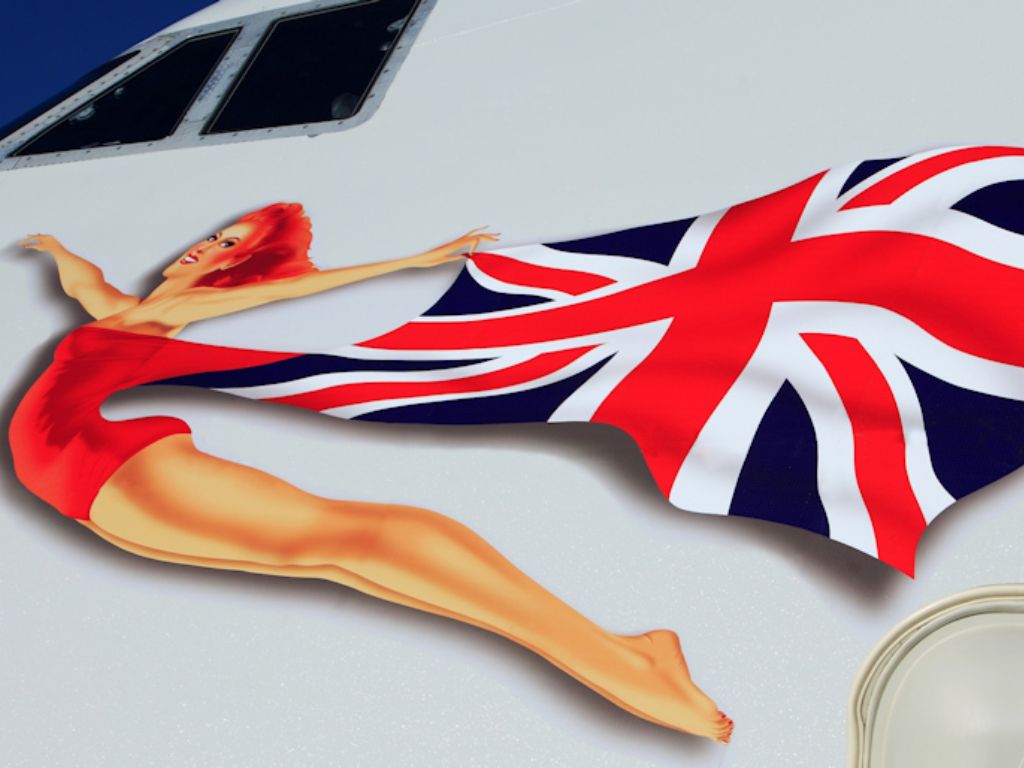
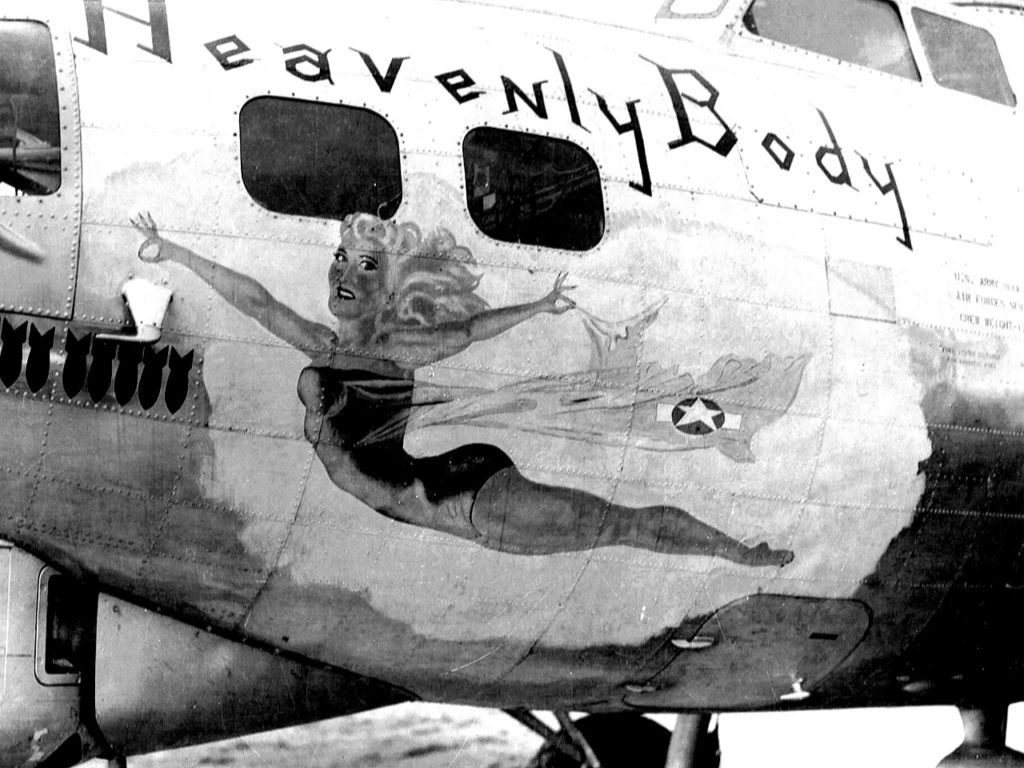
It’s thought the first nose art on an aircraft was a dragon painted on a flying boat in 1913. The practice was adopted by German and Italian pilots in World War I, though it’s mostly associated with American World War II planes. Nose paintings were an expression of individuality and rebellion during times when strict military protocols ruled. As well as being a good luck symbol, the art helped to ward off homesickness and brought familiarity to an unfamiliar world.
The Flying Lady didn’t appear on our earliest aircraft. Our livery was mostly white back then, and at that point, we didn’t even have our famous red engines. On the nose of our planes, the Virgin logo was the only adornment to be seen. Nobody knows exactly when the first Varga Girl flew, or where she flew to – if you know the answer, get in touch.
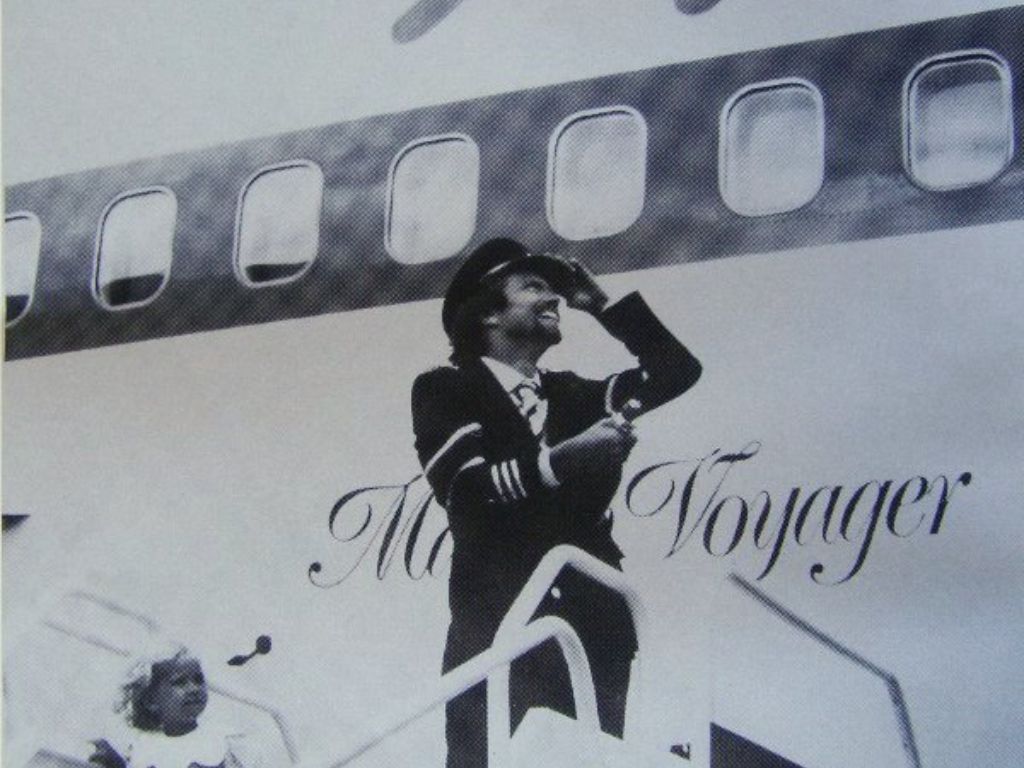
What? No Flying Lady? Richard (and Holly) on 22 June 1984 ahead of our first ever flight
When Richard came up with the idea of painting our aircraft noses, a search was launched to find a suitable piece of art. Many American World War II planes drew inspiration from illustrations by Peruvian artist Alberto Vargas (hence the name Varga Girl) who painted pin-up images for Esquire Magazine during the 1940s. We discovered the original artwork for our planes in the December 1943 edition, and after permission was granted by the Vargas estate, it started to appear on our aircraft.
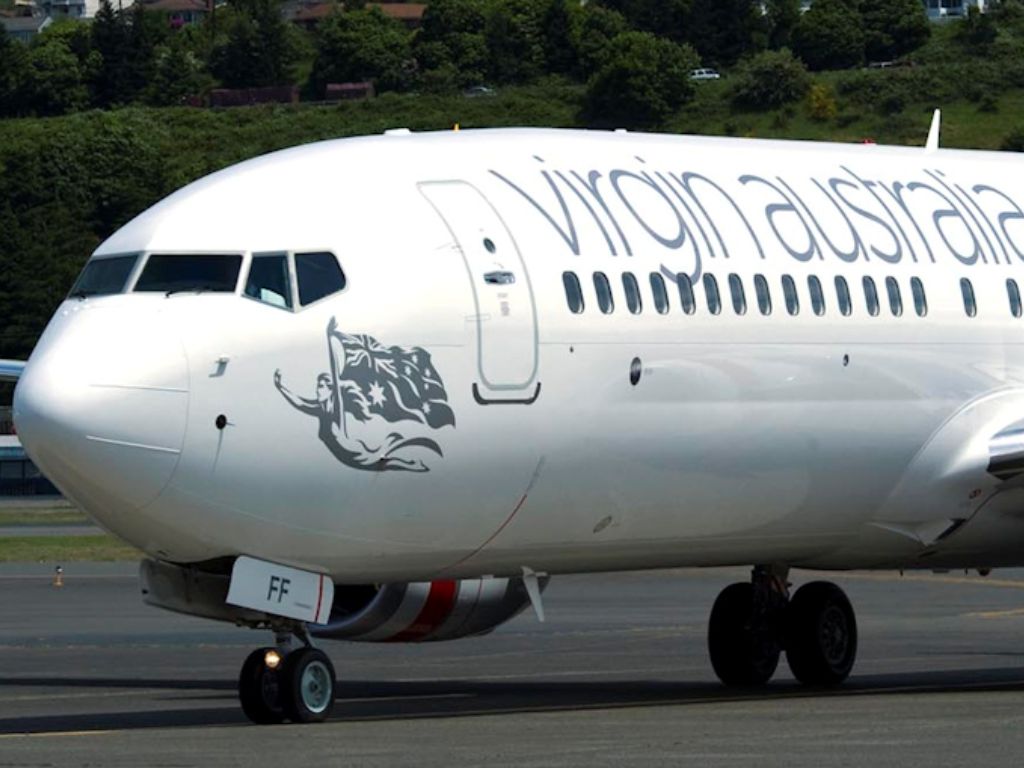
Made of vinyl, the decals come in three pieces and are incredibly difficult to apply – it is not unheard of for the poor Flying Lady to end up with an extra crease in her knees when the flag is lined up correctly.

The smallest version of the flying lady on our Airbus fleet
Once the decal is fixed in place, a sealing lacquer is applied on top of the Varga Girl as protection from the 500mph winds that will blast her. Even with this, we still need to replace her every 14 months to a year, a job that takes a specialist team in our hangar half a day to complete. This is why very few airlines have decals applied in front of the first set of doors as this is a ‘high friction’ area of the aircraft.
Over the years, there have been a number of variations to the artwork. The original had Virgin written on the flag and our lady was wearing a neckerchief (is that even a word?). The next iteration displayed the Union flag and still had the neckerchief, though after someone compared it to a British Airways logo, it was promptly dropped. The latest, neckerchief-free design has a much bigger Union flag, and there have also been a number of ‘one-off’ designs including Austin Powers, Dita Von Teese, and Golden Girl (for the Tokyo Olympics). When we operated a relief flight to Basra after the first Gulf War the Flying Lady was also painted over with a Union flag.
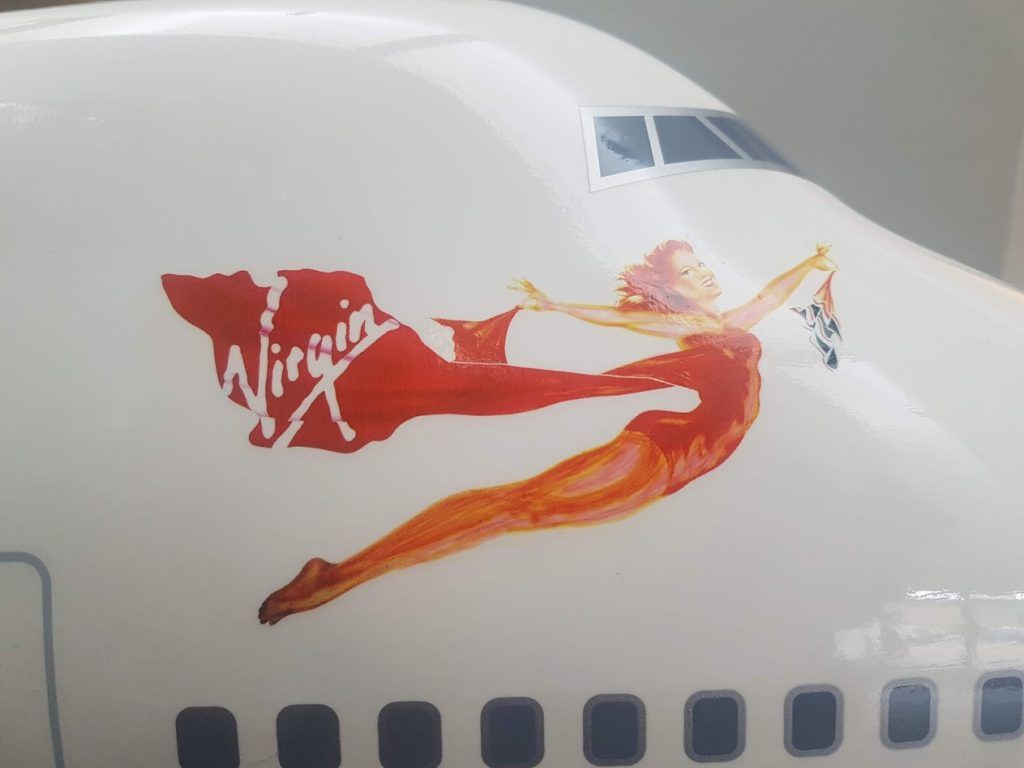
Getting the flying ladies onto our Boeing 787s was a particular challenge. There is a strict maximum limit of what can be applied on top of the composite fuselage. To meet that criteria we had to embed the vinyl into the paintwork. This involves having an indentation to match the decal.
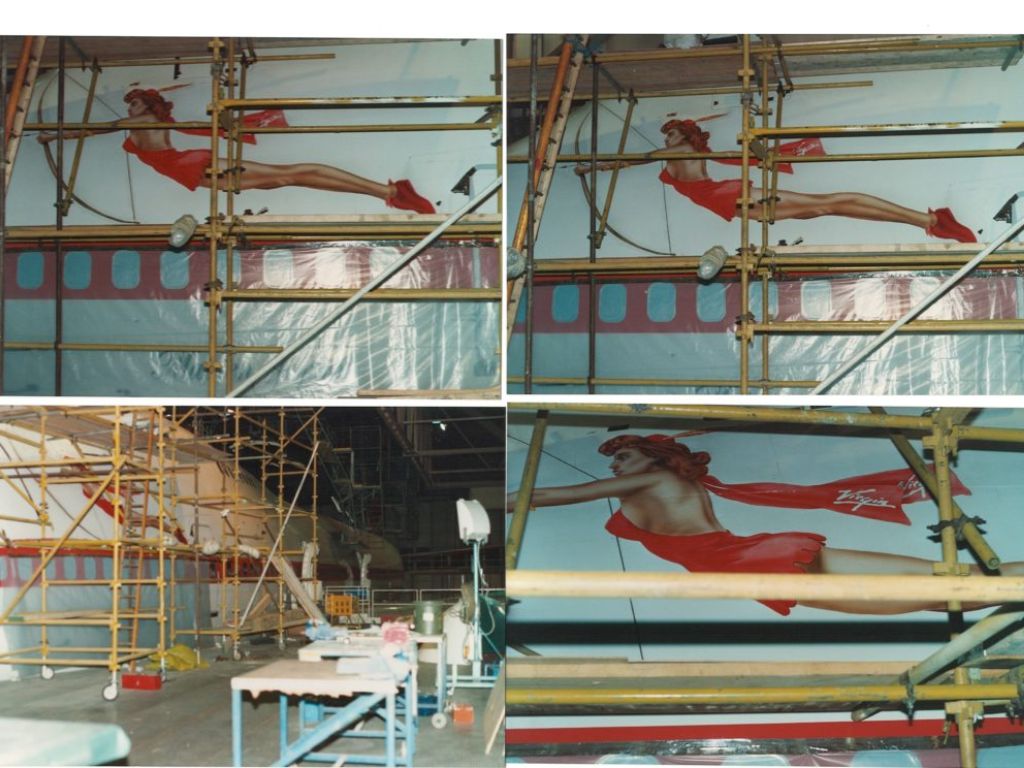
Archer photos courtesy of Jeremy Berridge , one of our Boeing 787 pilots.
One Varga Girl – the archer – on G-TKYO, was extra special. Featuring a bow and arrow this was not a decal but hand painted. Terry Flynn, Manager, Aircraft Assets, take up the story:
“I was detailed to meet the guy who hand-painted The Archer Vargas model on G-TKYO in 1989 during its entry into service check in Paris. I was told I would recognise him as he looked like Richard and would be wearing a sweater like Richard, which he did. I escort him to the aircraft and got his scaffold tower in place then sat back to watch the skills of a signwriter / mural artist at work.
Later that day we noticed that there were silhouette outlines of what looked like pirate hats along the solid red line we had over the
windows in those days. So we questioned this as it wasn’t anything we had seen or been told about. His response was – “It’s what Richard wants”. When pushed it turned out that these were going to be Pirate hats with the 3 main competitors on our new London – Tokyo route. Namely JAL, BA and ANA names on them and the Archer was taking aim at them. This was linked to the infamous description Lord King then Chief Exec of BA who described Richard as a Pirate.
We had to fight to get these hats removed as it was not going to help our case if we were to go technical in Narita. We’d have had to ask JAL, BA and ANA for help and it’s unlikely they’d be very supportive!
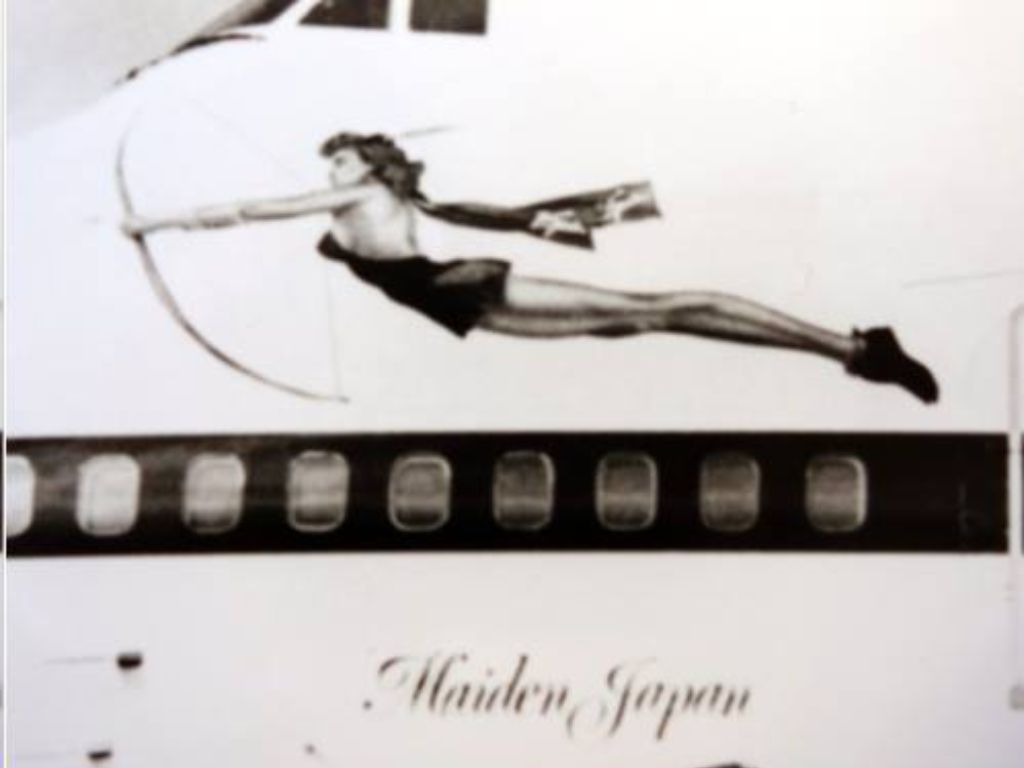
The original decal on the early Boeing 747-200s was the largest but was incredibly expensive to apply and maintain so it was shrunk in later designs. The first was printed in 72 dpi resolution which made it look very blocky when viewed up close. They’re now made at 300 dpi and look far superior to previous versions.
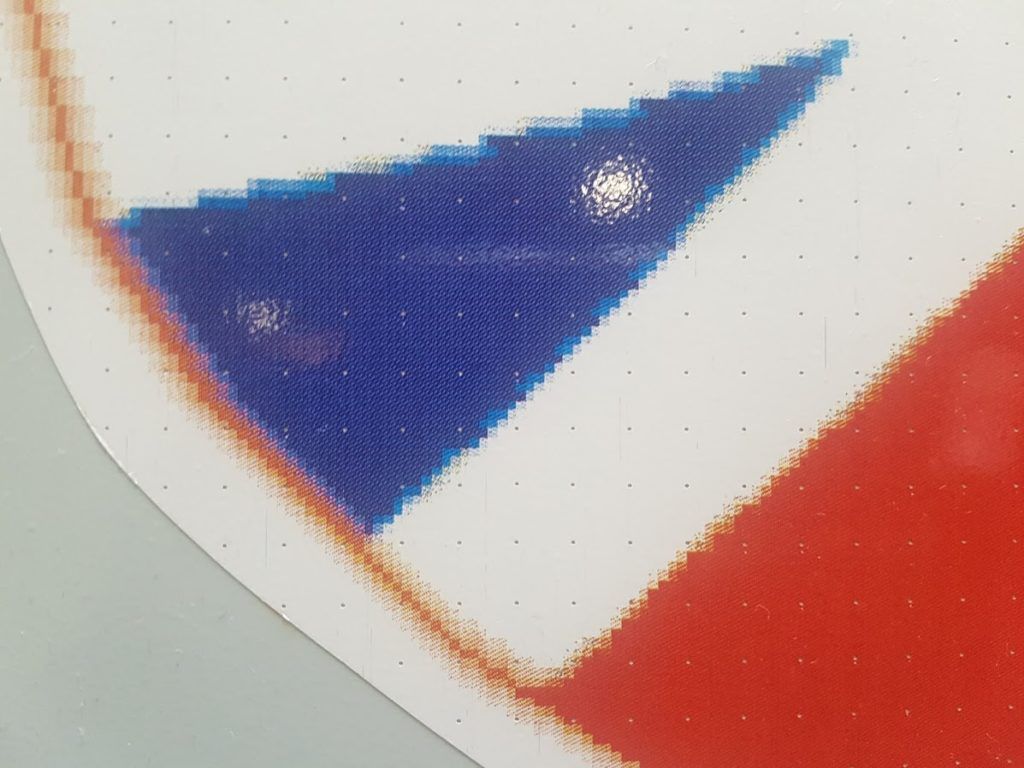
A close up of the original 747-200 decal showing low resolution and pinholes
Many thanks to Dave Napper, Senior Engineer – Design and Development, our livery guru and Varga Girl expert, who helped with a lot of the information in this post.
